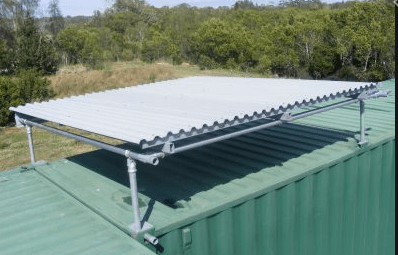CorbinDallas
Mechanical
- Jun 8, 2020
- 5
I have had a hard time trying to determine what internal temperature the air will reach inside of a container sitting in the sun. For my example, I will use an insulated shipping container.
Ambient Temp: 50°C
Color of container: White
U-value: 0.2
Max Irradiance intensity: 1120 W/m^2
Container Dimensions: 20ft x 8ft x 10ft
If this container is sitting in the direct sunlight, assuming there is no wind, how hot will it get inside during the day? Eventually, it will get hotter inside the container than the ambient temp due to the solar load, and the ambient temp would actually begin cooling, but that's assuming stead state and t goes to infinite. Any ideas on how I could tackle this?
Thanks
Ambient Temp: 50°C
Color of container: White
U-value: 0.2
Max Irradiance intensity: 1120 W/m^2
Container Dimensions: 20ft x 8ft x 10ft
If this container is sitting in the direct sunlight, assuming there is no wind, how hot will it get inside during the day? Eventually, it will get hotter inside the container than the ambient temp due to the solar load, and the ambient temp would actually begin cooling, but that's assuming stead state and t goes to infinite. Any ideas on how I could tackle this?
Thanks

